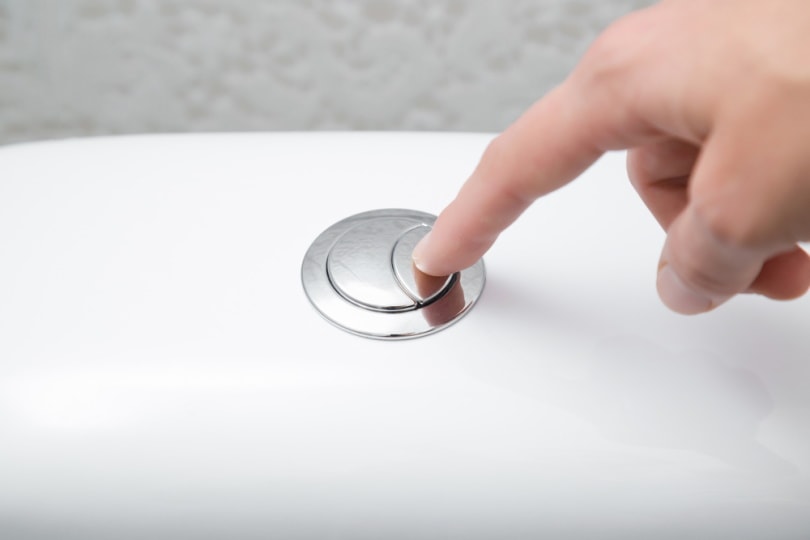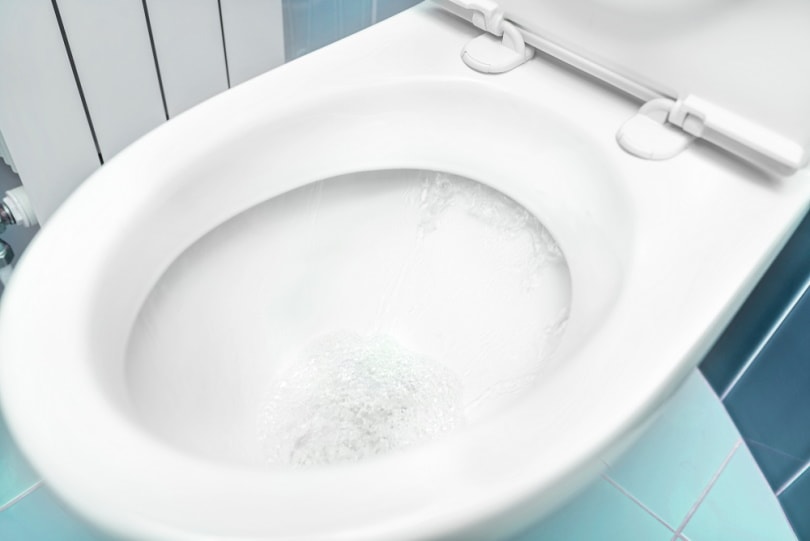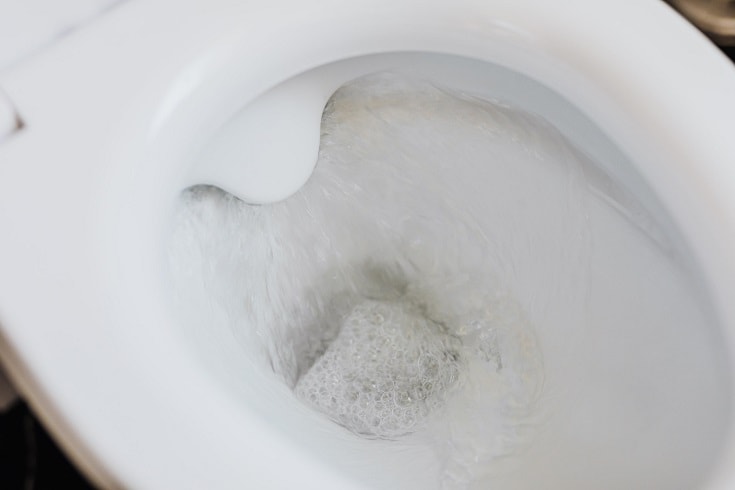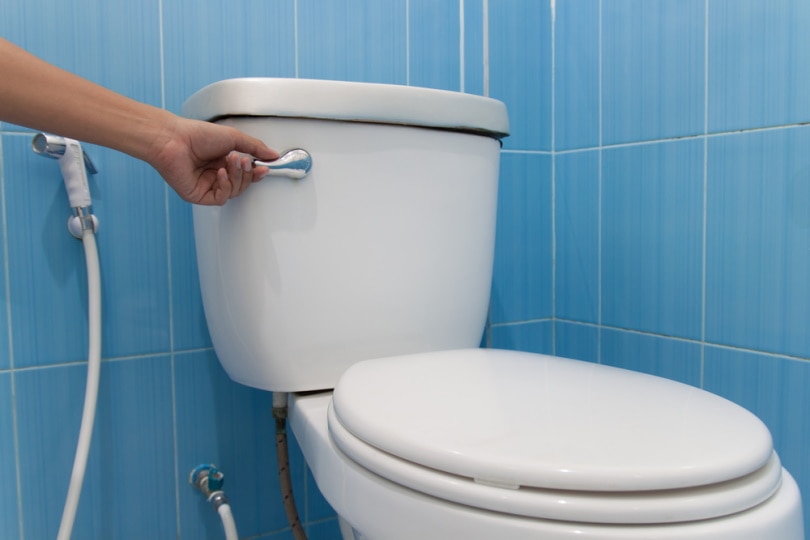How Many Gallons Does It Take To Flush a Toilet? National Standards, Facts, & FAQ
-
Visnja Radosavljevic
- Last updated:

While many of us don’t realize this, toilets represent the largest source of water usage in our homes. In fact, toilets are accountable for almost 30% of water consumption in households worldwide.
As we all use our toilets multiple times a day, a thought that may come to your mind is how many gallons it takes to flush a toilet. Some of the older toilets use up to 7 gallons of water per flush, which is extremely high compared to the regulated 1.6-gallon amount. In this article, we’ll provide you with the necessary information while teaching you more about toilet flushes and water efficiency.
The National Standards of Water Efficiency
In 1992, George Bush signed the EPAct (Energy Policy Act) in order to improve environmental conservation and protection efforts in the USA. The EPAct includes standards of water efficiency for faucets, showerheads, and toilets. Per those legal regulations, the amount of water a toilet can use during flushing is up to 1.6 gallons.
The Energy Policy Act fully took place in 1994, but as there are old homes across the county, there are still old toilets that use more gallons than the amount regulated by EPAct.
Because of this, EPA has created a program called WaterSense that allows consumers to identify toilets with high efficiency and lower water usage easily. The toilets undergo various testing for efficiency and performance to get the WaterSense stamp, so only the toilets that complete the certification process end up with this label.

Flushing Facts
Before we get into more detail about the gallons of water we spend to flush the toilet, we want to provide some facts about toilet flushes.
- Current federal standards for water usage during flushing is 1.6 gallons per flush
- An average household flushes at least five times a day.
- Energy-efficient toilets can save water usage by 20% to 60%, or approximately 13,000 gallons of water per year.
- If switching over to an energy-efficient toilet, an average household would be able to save almost $110 on water bills.
Gallons Per Flush (GPF)
Gallons per flush (GPF) represents a measurement we use to calculate how much water a toilet uses per flush. The measurement varies between toilet brands, models, and production years.
In the past, before EPAct was signed, households typically had toilets that used between 3 to 7 gallons of water per flush. That is much higher than the current national standard. Since toilets are the most significant in water usage inside our homes, GPF reduction allows toilets to have the same performance while saving you money and conserving water.
However, the current standard is 1.6 gallons per flush, and toilets with a GPF significantly lower could create issues when flushing heavy waste. If you’re looking to replace or upgrade your toilet, paying attention to the GPF is crucial. That way, you can find a toilet with the best flushing power for your needs while saving on water bills, reducing water consumption, and taking care of your environment.

Where To Find Your Toilet’s GPF?
It’s beneficial to have details about your plumbing infrastructure, including your toilet and its GPF. Without knowing your toilet’s GPF, you could be unintentionally using way more water and, therefore, more money on your water bills than necessary.
Most manufacturers know that it’s important to know your GPF, which is why they typically label it on the toilet. Commonly, the GPF is labeled between the tank and the seat. Occasionally, the measurement can also be labeled on the bottom side of the tank lid or inside on the tank walls.
If your toilet was manufactured after 1994, your GPF is either 1.6 gallons or lower, but the GPF on older toilets can vary. If there’s no label with GPF on your toilet, you can calculate it by using some simple and quick measurements.
How To Calculate Your Toilet’s GPF
It can be tricky to calculate the GPF if it’s not labeled on your toilet, but it’s not an impossible mission.
- A tape measure
- A calculator
- Basic understanding of mathematics

- Put the end of the measuring tape inside the toilet water tank, and write down the level of water in inches
- While keeping the measuring tape in place, flush your toilet to drain the water (some water will remain at the bottom of the water tank)
- Use the measuring tape to measure the lowest water level inside your tank in inches
- Once you have all the details, subtract the second measurement from the first one to get a height measurement
- The next step is to measure the width and length of the tank
- Multiply all the measurements (height x length x width) to get your toilet’s volume of water in cubic inches
- To convert your discoverings from cubic inches to gallons, divide the total you get by 231
Will You Save Water by Not Always Flushing?
Some people choose to occasionally skip flushing, hoping that will save their water consumption and make their water bills lower. However, is it actually true you’ll be saving the environment and reducing your bills by not constantly flushing?
As most people flush between 5 to 7 times a day, if each flush spends 1.6 gallons of water, you would be spending around 9.6 gallons of water to flush daily. Although the number might add up, especially in families with multiple members, not flushing will not save as much water as one would hope.
Not always flushing could be beneficial in homes with older toilets that spend more gallons of water per flush. Still, even then, the water you’ll save cannot compare with the risks of leaving your toilet filled with urine or feces. It’s an extremely unhygienic option for reducing water consumption, which is why, instead of not flushing, we suggest replacing your toilet with a high-efficiency toilet.

Other Ways To Save Water
If investing in a new toilet isn’t something on your current to-do list, you can find alternative ways to conserve water. Some solutions are short-term and low effective, while others need investment and more work but will pay off in the long run.
- Put a brick in the toilet water tank: Although this might sound silly, putting a brick in the toilet water tank will displace approximately a gallon of water. That way, the amount of water you need to refill the tank will be lower. However, this is not the best long-term solution as it could lower the flushing effectiveness.
- Reuse used water to flush your toilet: You can use waste water from washing clothes, hands, or bathing to flush your toilet without using the water from the tank. Although this solution is effective, it will require you to plan ahead and store water until you need to flush.
- Get a dual-flush toilet or invest in a toilet-modification kit: These options are much cheaper than replacing your toilet, but they can be hard to maintain and install, which is something to keep in mind. Also, people unfamiliar with these toilet systems might be confused when they use your bathroom.
- Check your toilet for leaks: Toilet leaks are frequent and can sometimes appear invisible, so if you notice that your water tank is empty, inspect the area for leakage signs.
Final Thoughts
Since the EPAct was signed, toilet manufacturers have made toilets that use 1.6 gallons of water or less per flush, which is good for our environment and your water bills. It’s best to check the GPF on your toilet, and if you have an old toilet that spends more than 1.6 gallons, it might be time to replace it or look for alternative ways to reduce water consumption.
- “Residential Toilets”
- “How Many Gallons of Water Does It Take to Flush a Toilet?”
- “How-Many-Gallons-of-Water-Does-a-Toilet-Use”
- “Do You Really Save Money By Not Always Flushing?”
- “How Much Water Does A Toilet Use? (Saving Tips)”
- “How much water does your toilet use?”
- “How Much Water Does It Take To Flush A Toilet?”
- “What Are Gallons Per Flush?”
See also:
- How Much Room Do You Need for a Toilet?
- Why is My Toilet Seat Turning Blue
- How Does a Toilet Fill Valve Work?
- Why Does My Sink Gurgle When the Toilet Flushes?
Featured Image Credit: FotoDuets, Shutterstock
Contents
